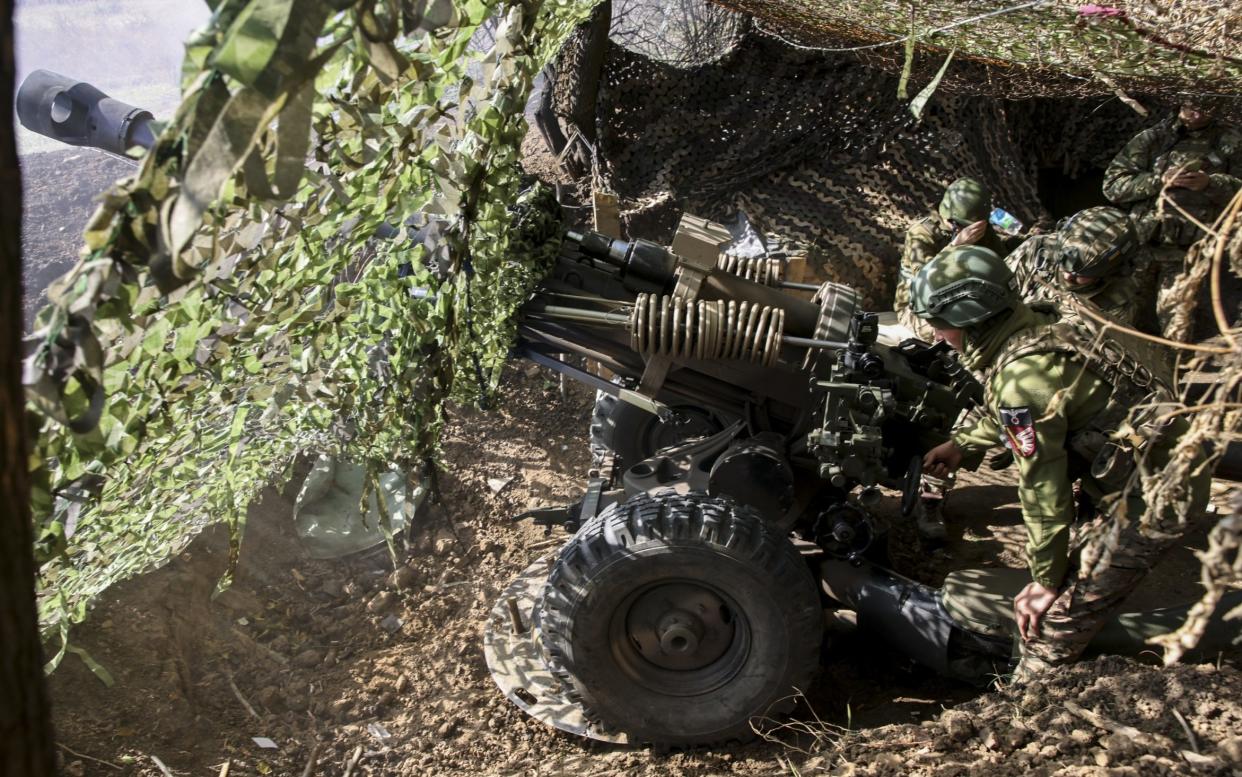Ukrainian forces cross Dnipro river in major tactical advance

Ukrainian forces have crossed the Dnipro river and established a position on the opposite bank as they push into Russian-occupied territory in southern Ukraine, according to Russian sources.
Pro-Kremlin military bloggers said Kyiv’s troops had created a bridgehead, captured the town of Poima, and were pushing north towards the nearby town of Pishchanivka.
The two towns are south of a destroyed railway bridge and upriver from the Antonivka road crossing, meaning the Ukrainians have to make dangerous, amphibious crossings.
It was claimed that Ukraine, after massing units on the opposite bank, had managed to gain a foothold on the Russian-held side after a sustained campaign of artillery and drone attacks.
‘The situation has stabilised’
Unverified battlefield footage appeared to show Ukrainian forces being targeted by Russian artillery near a railway bridge on the left bank of the Dnipro, south from Ukrainian-held Prydniprovs’ke.
From the footage, it is not clear whether Ukraine has been able to establish a permanent presence in the area.
Another video appeared to show Ukrainian forces moving away from the initial area of fighting and back towards safer ground near Antonivka bridge.
Rybar, an authoritative Russian military blogger, said: “The situation has stabilised thanks to massive shelling of both the forward and rear lines of the Ukrainian navy.
“However, it is still a long way to completely surprise the enemy since there are reserves, and no one has cancelled plans for an offensive in the Kherson region.”
Until recently, fighting had almost completely ground to a halt in the Kherson region after the destruction of the Kakhovka dam flooded much of the potential battlefields.
Ukraine has amassed almost 7,000 troops, 46 tanks, 223 armoured vehicles and eight artillery guns in the area now, according to Rochan Consulting’s Ukraine Conflict Monitor.
To mount an assault into Russian-held land, Ukraine would have to carry out amphibious raids across the Dnipro river as all major crossings have been destroyed.
“Undoubtedly, this high-risk but high-reward amphibious operation, if successful, would bring Kyiv close to Crimea and allow it to bypass Russian fortifications in the Zaporizhzhia oblast,” Rochan Consulting wrote in a report circulated on Wednesday.
Any push would likely closely replicate tactics employed by Ukrainian forces further east in the Zaporizhzhia and Donetsk regions.
Western analysts believe Kyiv would hope to advance towards the Black Sea coast, severing Russian defensive lines and opening up a new route into occupied Crimea.
The introduction of ATACMS (army tactical missile system) to Ukraine’s arsenal has spooked Russian commentators that Kyiv will seek to exploit land captured on the left bank in order to target Russia’s rear logistics hubs.
Two Majors, a Telegram channel with more than 400,000 followers, wrote: “The information that became known by yesterday evening about the expansion of the zone of control of the Ukrainian Armed Forces on our bank of the Dnipro indicates plans to create a real enemy bridgehead for further actions.
“A new element of the situation is the presence of long-range missiles from the Ukrainian Armed Forces, which were used yesterday at the Berdiansk airfield. Now the enemy will try to launch diversionary strikes on the maximum accessible depth of defence in the southern direction, and a massive UAV raid tonight may indicate a clarification of the positioning areas of our air defence.”
Despite concerns on the Russian side, Rochan Consulting reported that the odds are still stacked in Moscow’s favour.
“When looking at the quantity of units deployed by both sides, it is clear that Ukrainians are inferior,” the defence analysis firm based in Gdansk, Poland, wrote.
But it added: “Achieving an operational surprise, a high degree of coordination with artillery may allow Ukrainians to establish and expand the bridgehead near the river bank.
“However, moving forward inside the Black Sea Lowland will be difficult without deploying additional formations.”


